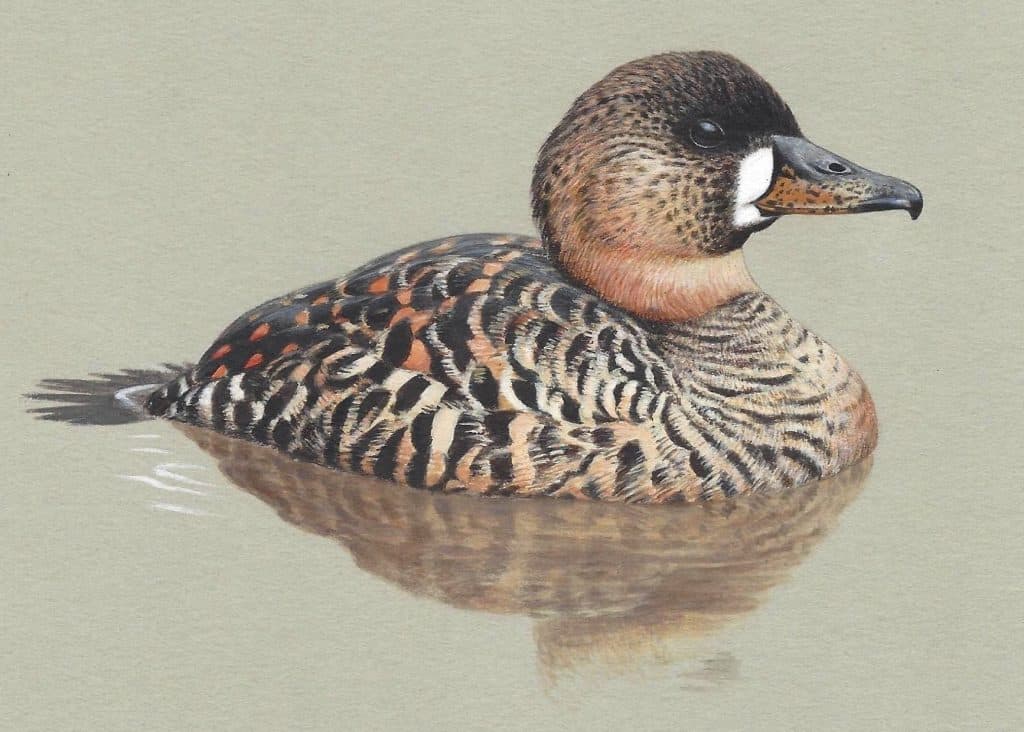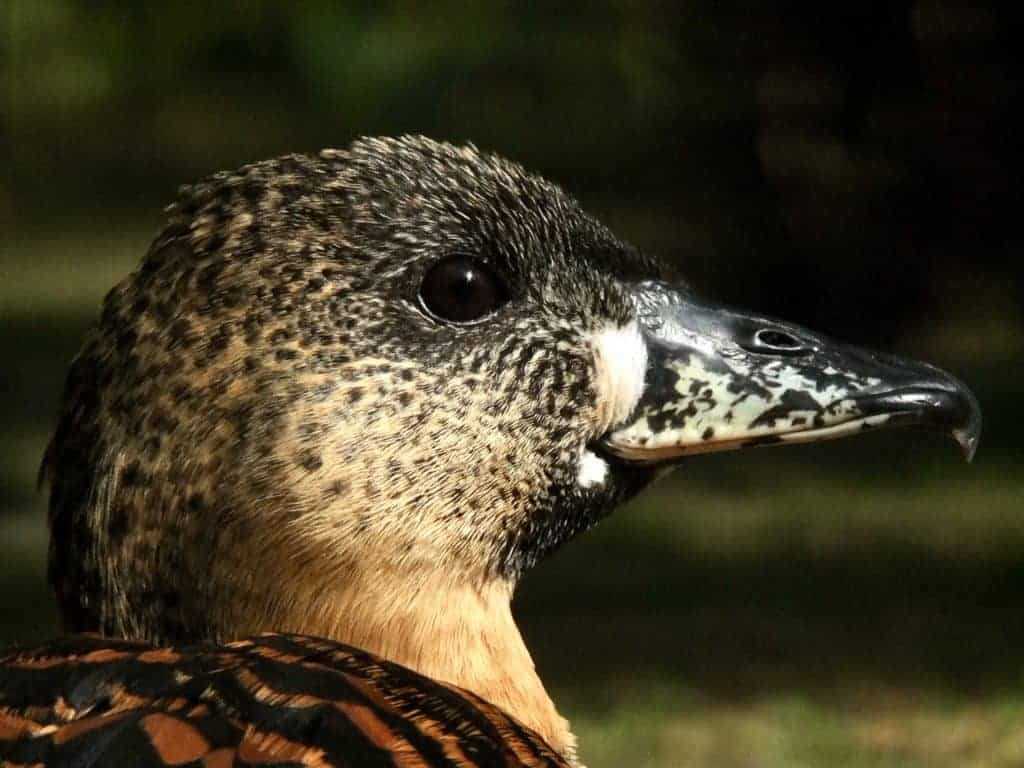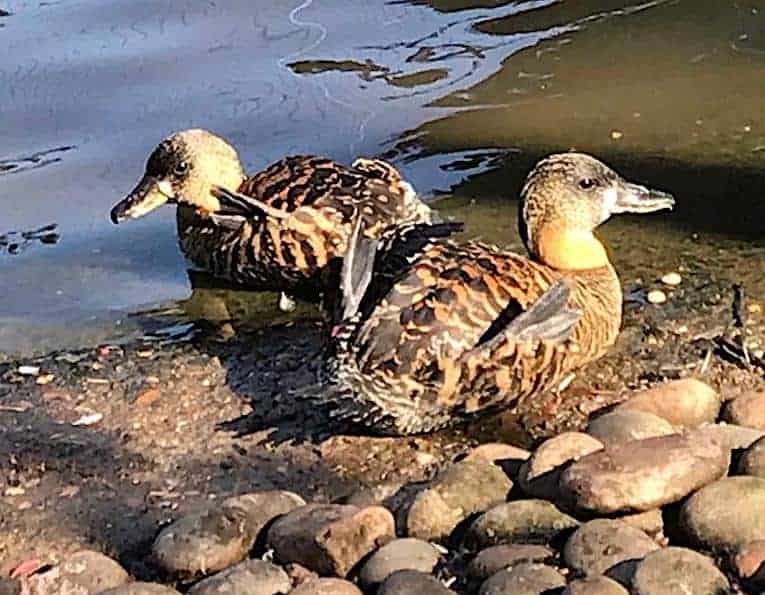White-backed Duck

The reason for the name White-backed Duck is obvious when they fly. But they don’t do that very often, or very far.

There are two subspecies of White-backed Duck recognised:
- T. l. leuconotus of south Africa from Senegal and Chad to Ethiopia and southern South Africa
- T. l. insularis of Madagascar
Thalassornis leuconotus
These interesting little ducks are widespread throughout much of tropical Africa; East Senegal to Chad, Ethiopia to South Africa. they can be found on a variety of quiet freshwater lakes, pools, lagoons, marshes and swamps. White-backed Ducks will also take to man-made waters where food is abundant.
Mostly vegetarian as adults, they favour waterlilies and other aquatic plant seeds and leaves, feeding principally at night.
Though mostly seen on water, they have a curious habit of loafing on the bank with their feet up, rather than tucking a beak under a wing. Their legs are long, but set well back on the body so they are better adapted for swimming than for a life on land. If spooked, they can travel a surprising distance underwater.

In Madagascar, the White-backed Duck T. l. insularis is known as Adáladála or the ‘Foolish One’. Being reluctant to fly until the very last moment makes them an easy target for hunters. Some populations in east Africa on the other hand are noted for their shyness. It seems that the majority of birds in aviculture are reasonably confiding, making them a charming addition to a collection.
Like the rest of the Dendrocygninae, they form strong pair bonds. Both sexes incubate and care for progeny. Their eggs, 6–8 to a clutch, are a rich brown, possibly as a defence against brood parasitism by the Maccoa Duck Oxyura maccoa, which shares its range. Incubation is normally 28 days.
Though easy to maintain, some strains of White-backed Ducks are not at all easy to raise. Physical sexing is very difficult so DNA sexing is advised.
FURTHER READING
eBird White-backed Duck ebird.org/species/whbduc1
Johnsgard, P. A. Ducks, Geese and Swans of the World, Digital Commons@University of Nebraska – Lincoln (2010) Tribe Dendrocygnini.
Philips, J. C. 1986 A Natural History of the Ducks: Plectropterinae, Dendrocygninae, Anatinae Vol. 1. Courier Corporation
Share this page